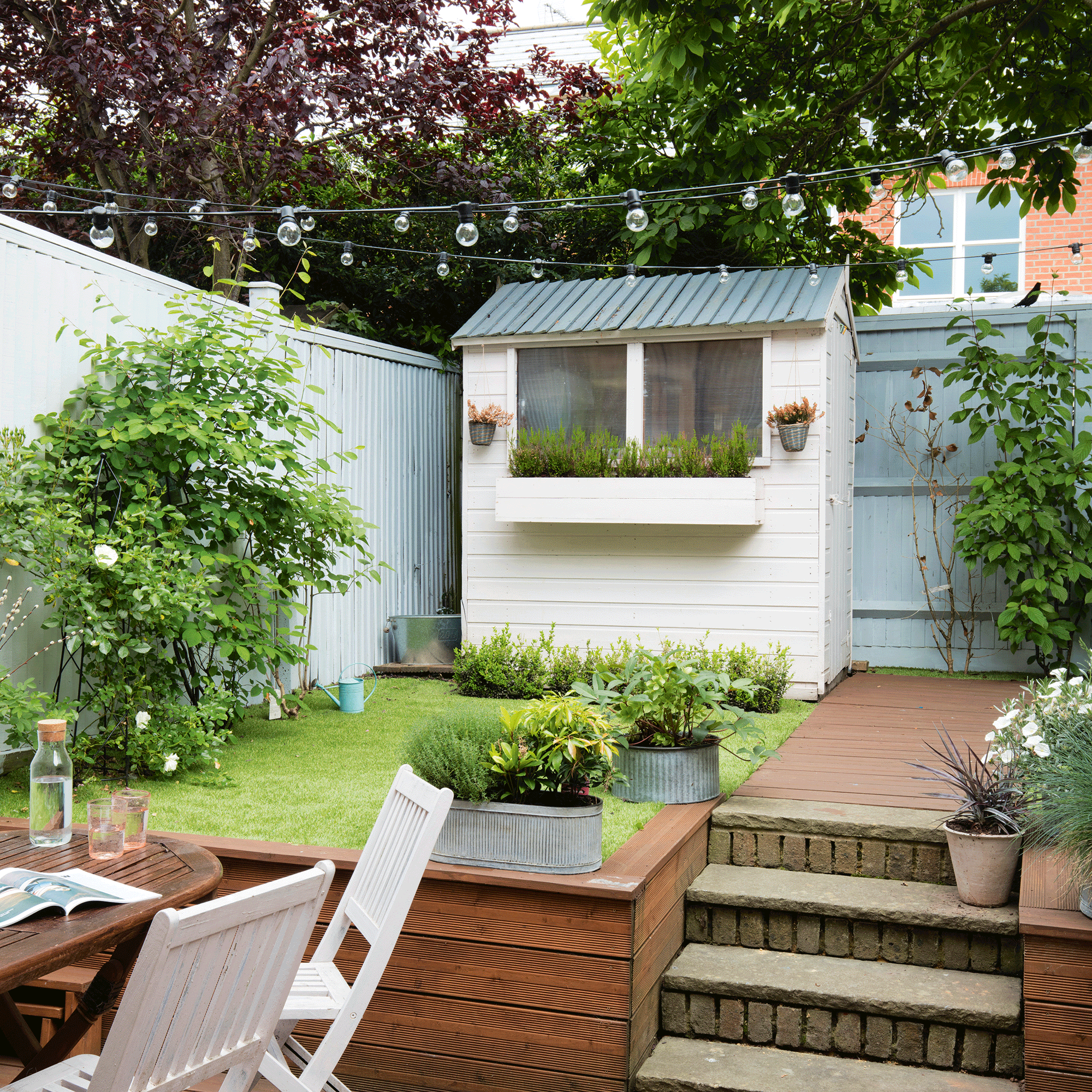
You might have considered feng shui indoors but did you know that you can also utilise feng shui in your garden? Harnessing the positive energy of feng shui when planning a garden is also a lot easier than you might think.
‘The idea behind feng shui is that of a peaceful and harmonious space, allowing the natural flow of energy, which influences all those who use the space,’ explains Feng Shui Expert Inbaal Honigman, while partnering with Upmove. ‘Striving to create a space like this – be it indoors or outdoors – can result in positive changes to one’s mood, health and life.’
Essentially, it ‘is an ancient Chinese practice that aims to harmonise the natural energy within a space, arranging things to promote health, prosperity, and good fortune,’ says Lucie Bradley, Two Wests & Elliott’s Garden Expert. And with our gardens and outdoor spaces increasingly becoming an extension of our living spaces, it is only natural that we should bring a little feng shui knowledge outside to enhance any zen garden ideas.
Here are ten simple ways to use feng shui for your garden.
1. Declutter and take care of your surroundings

‘One of the first steps to take when implementing feng shui, to create a sense of calm, is by decluttering and fixing any broken objects,’ says Marlena Kaminska, Designer and Outdoor Lighting Expert at ValueLights.
You’ll also want to place distracting items such as dustbins and garden equipment ‘out of sight and behind trellis fencing so that they are easy to access, but not seen,’ Glynis Dinsdale, Feng Shui Consultant and Master Practitioner adds. Additionally, you want to keep positive energy flowing by removing dead plants, fallen leaves and any debris too.
2. Create harmony between the five elements by using colour
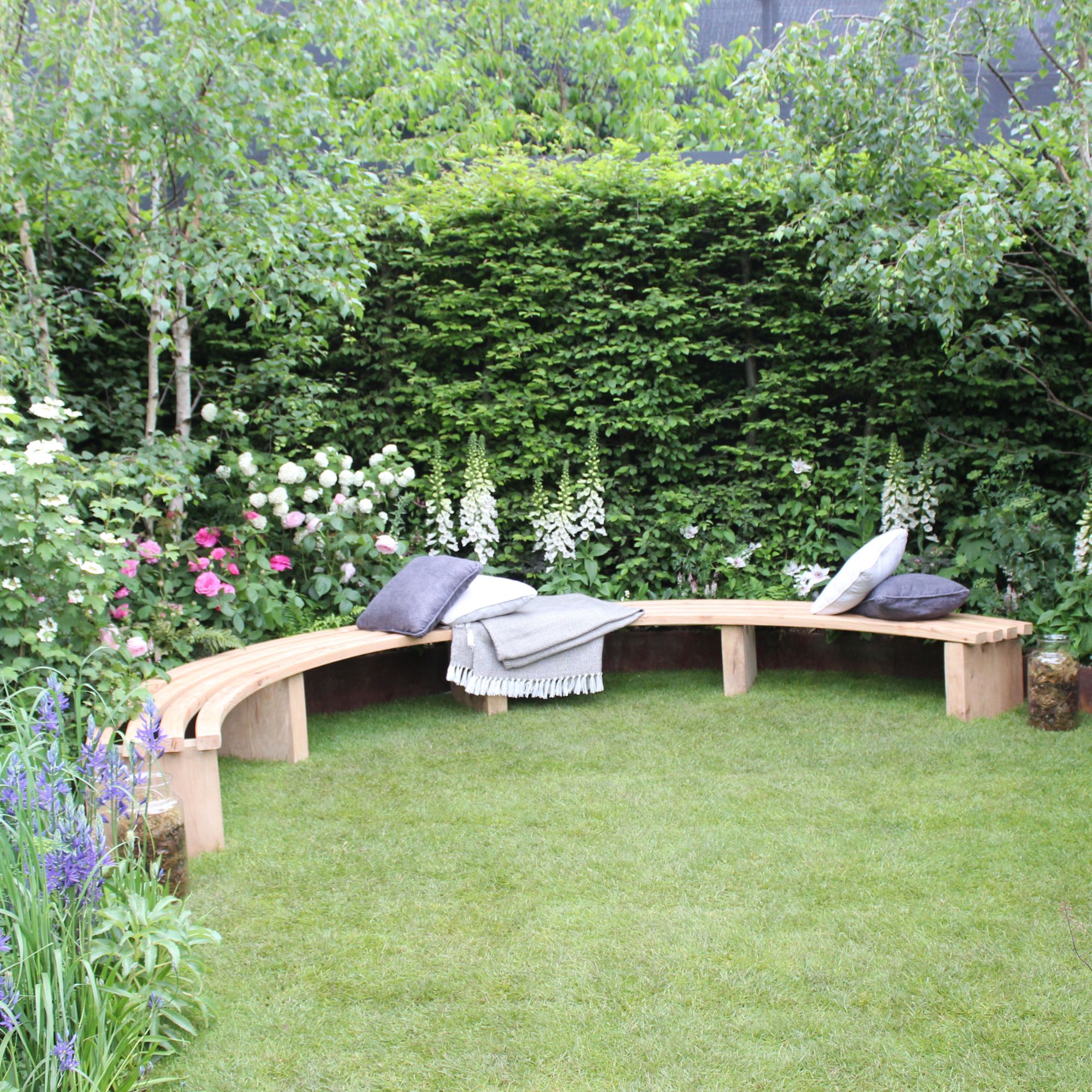
Colour is another key factor to consider when it comes to feng shui. ‘Different colours have different meanings associated with them - aligning with the five elements of Feng Shui; fire, wood, water, metal and earth,’ Marlena explains. And she has broken it down that bit further for us.
- Fire = Red/orange/purple/pink (to encourage happiness)
- Wood = Green/brown (to encourage growth)
- Water = Blue/purple (to encourage relaxation)
- Metal = White/grey/silver (to encourage control)
- Earth = Natural colours e.g. Taupe/beige (to encourage stability)
You can ‘incorporate the Fire element into your garden by planting red and orange plants such as Acer Trees, Dahlias and red Petunias,’ Morris explains. While ‘planting garden trees and shrubs, such as Boxwood and Birch, is a great way of symbolising the Wood element.’
‘Yellow plants such as yellow Roses, Tulips and Sunflowers, in clay pots and with rocks/stones in your garden displays also symbolises the Earth element,’ Morris affirms, with ‘beautiful white-flowering varieties of Peonies and Hydrangeas, or pastel coloured-plants such as English Lavender,’ encapsulating the metal element.
Above and beyond planting these colours into your garden, you could also bring these elements together by incorporating items such as fire pits, metal lighting or wicker or rattan outdoor furniture.
3. Utilise water
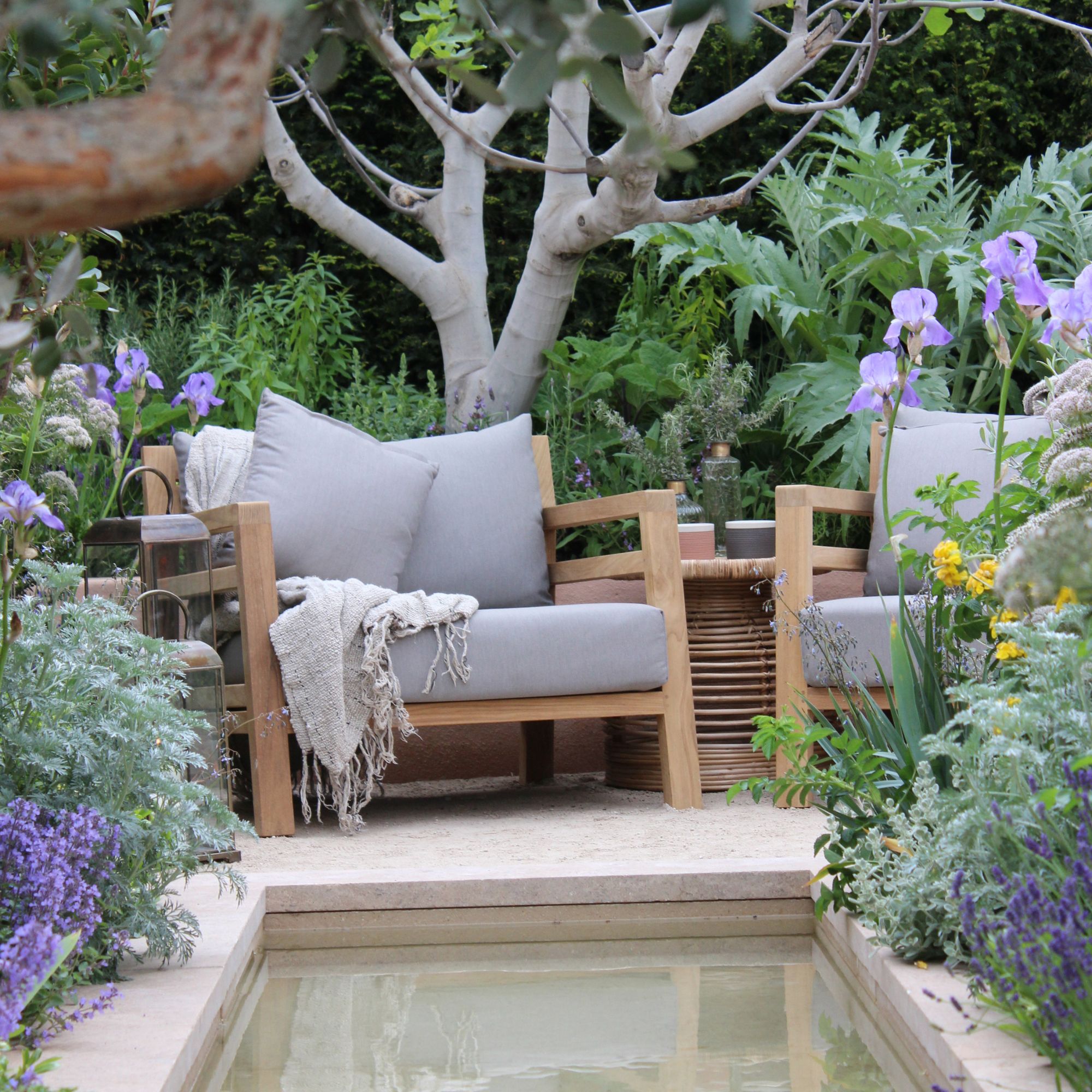
As one of the five key elements of feng shui, having a water feature idea of some kind, in your outdoor space, is of great importance. There are obvious ways to add water to your garden, such as with a water feature, fountain, pond or even a bird bath.
But you can also interpret the water element by adding ‘plants such as Wisteria, Delphiniums or black Pansies,’ Morris says. This is because some view water as being represented by the colour black whereas others view it as being blue, so it is open to interpretation and whichever hue you would prefer to add to your garden.
4. Create a focal point
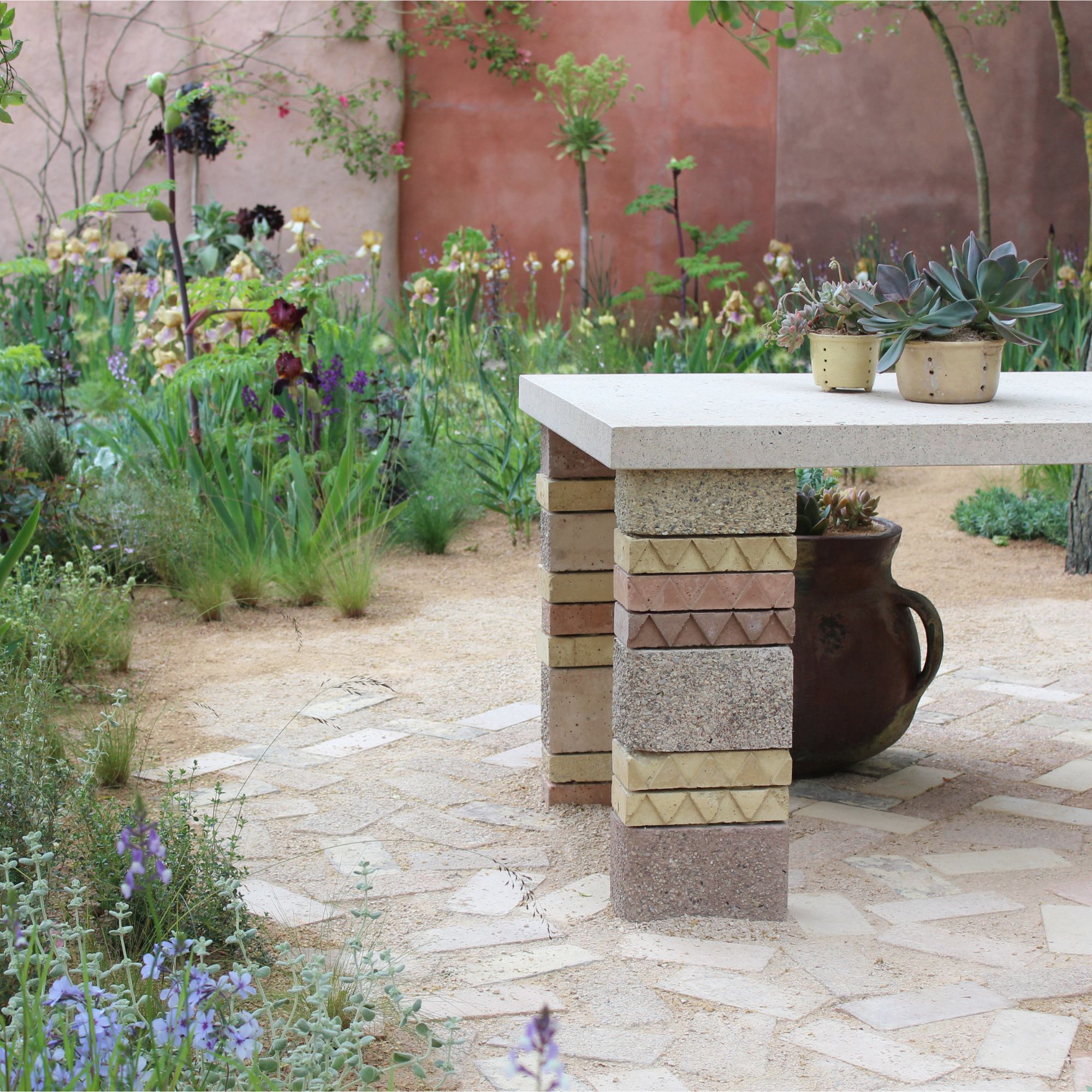
‘Feng shui experts believe that a focal point helps to direct the flow of energy throughout a garden,’ adds Tom Clifford, Director of Gardenstone. This can be something as simple as a water feature, tying it back into that key feng shui element, or you could erect a pergola or install a seating area. But just remember that ‘busy seating areas will prevent relaxation,’ Tom explains.
Adding a statue to your garden is another way to easily enhance your feng shui, Lucie argues. ‘Choose a statue or statues of fish, crane, deer, turtles or a three-legged frog – all of which are considered in Chinese culture to symbolise longevity and good health. You could also add statues to act as protectors – elephants, tigers, eagles, fu dogs – but ensure you place them so they face outwards, so they protect rather than cause harm to you and your family.’
5. Use seating to make the space more inviting
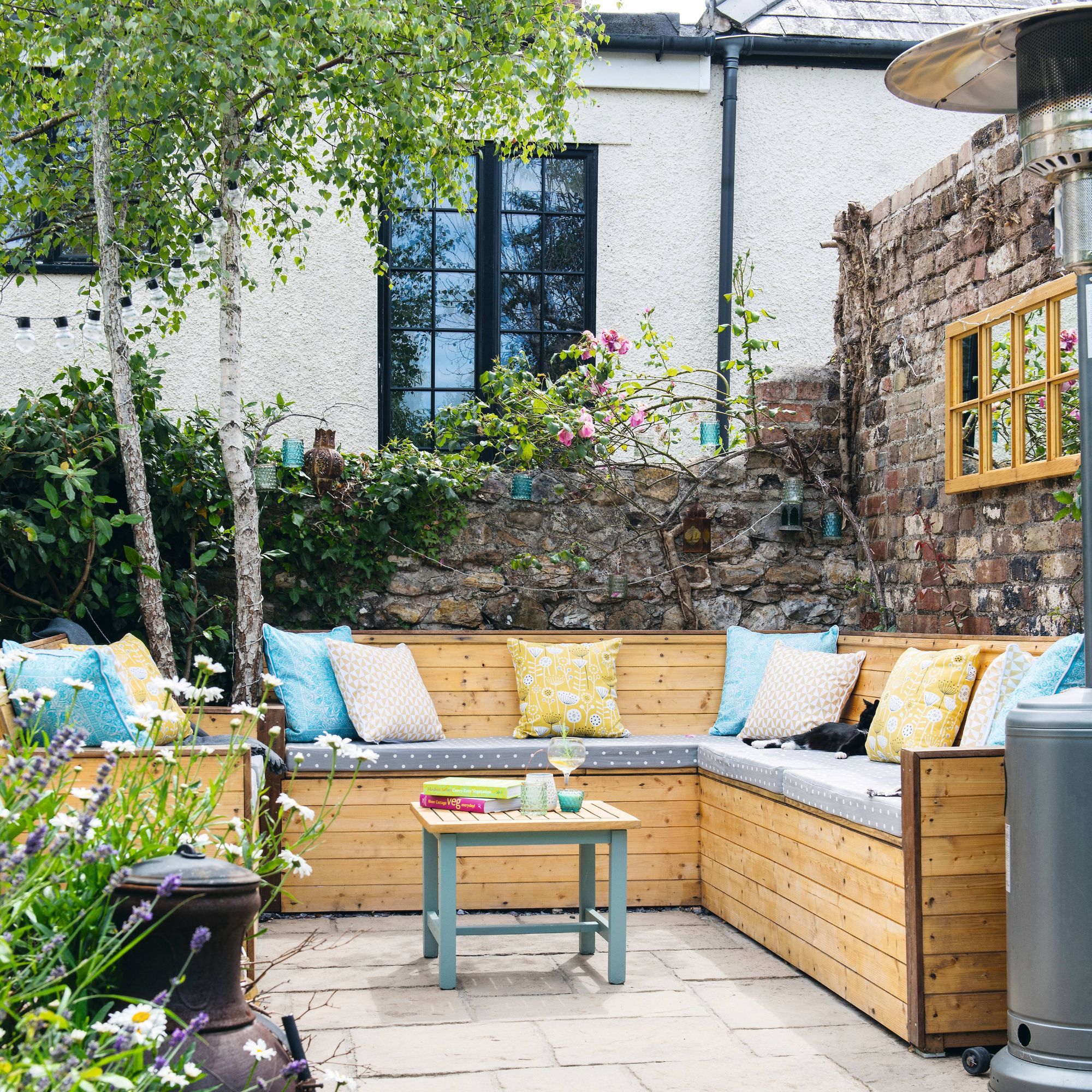
Speaking of seating, you’ll want to ‘add elegant, clean and well-kept seating, as well as a little table to make the space inviting for your loved ones,’ Inbaal instructs. ‘The chit-chat and laughter of people dining together can add to the positive feel of the space and encourage conversation and warmth.’
6. Position plants thoughtfully
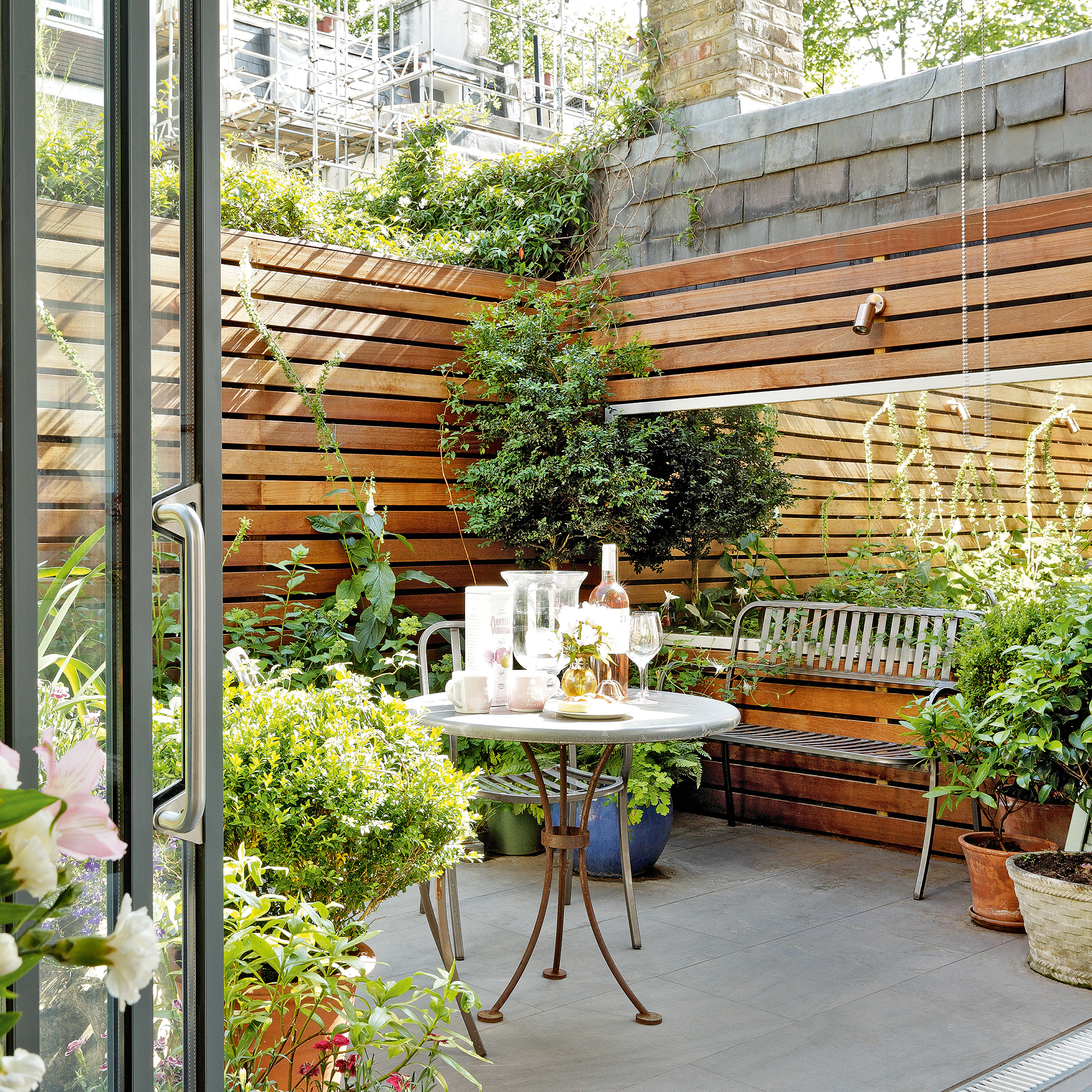
‘Positioning plants by feng shui principles calls for the balancing of numerous elements by grouping the plants in odd numbers,’ Gareth admits. While ‘species with rounded or soft leaves are believed to be the most receptive to feng shui design principles, so try to avoid including plants with hard or sharp edges.’
If you’re still not sure where to place them, it might be time to consult a Bagua, which is essentially a feng shui energy map. This will give you tailored advice depending on what kind of results you’re looking for and what kind of outdoor space you’re working with.
‘For example, if you want to improve health, you may place your plants in the East side of your garden, whereas if you want to attract love, you may choose to place plants in the South-West side of your garden,’ explains Morris Hankinson, Director of Hopes Grove Nurseries.
7. Balance things out

While grouping in odd numbers can help you decide how to position your plants, balance is another design tool to focus on. So, it’s important to ‘add features that represent yin and yang, as well as feminine and masculine energy,’ Morris advises.
‘For example, if you have particularly tall plants, complement them with shorter plants. Another example would be to ensure that your garden has a mixture of hard and soft surfaces (soft might be grass, whereas hard might be patio, decking or stone),’ he continues. While Jane Dobbs, Garden Department Lead at Allan’s Gardeners, suggests focusing on balancing ‘shaded areas (yin) with sunny spots (yang).’
8. Opt for curved and winding paths
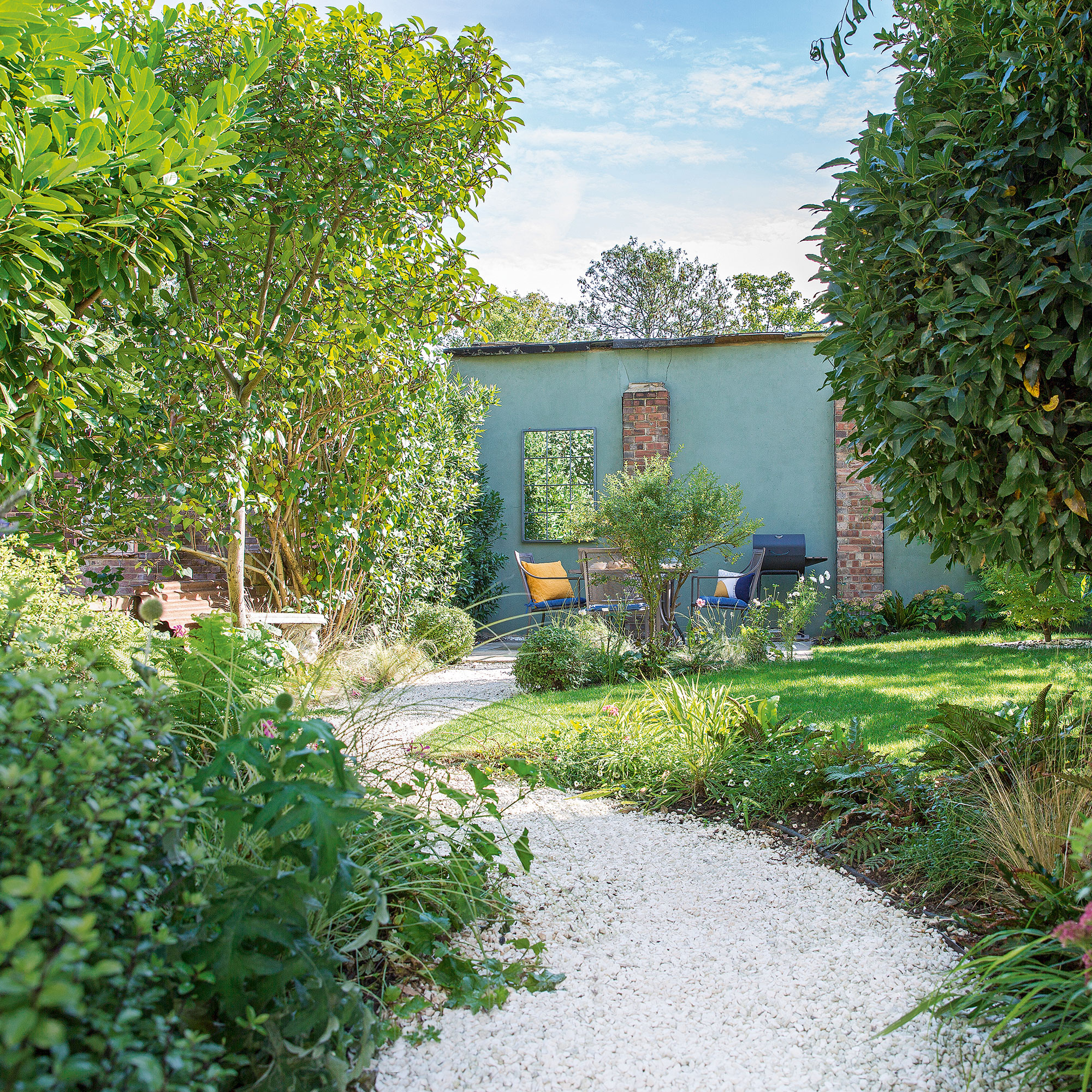
‘Winding pathways are better than straight ones because they let energy flow more smoothly,’ Jane admits. And this is because ‘feng shui follows the principle of a “river meandering slowly” rather than having a river of “high rushing water in a straight line” which will wipe out everything in its path,’ Glynis explains.
‘It is believed that Qi (often called Chi) flows better in curves than straight lines,’ Morris concurs. And adding curved features isn’t just limited to your garden path ideas. You can create curved features out of everything from your flower beds to your fencing or exterior walls.
9. Break up the space
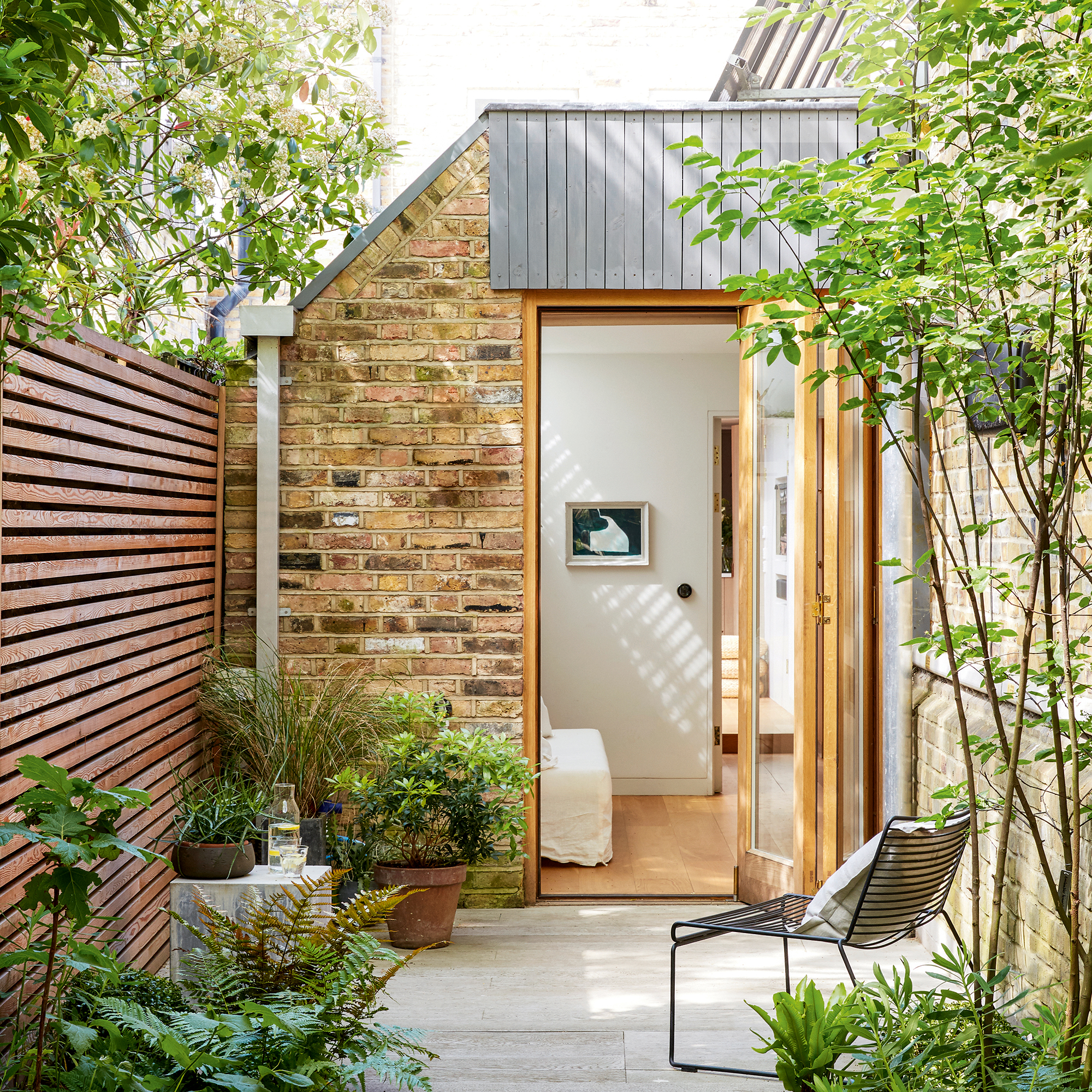
If you’re lucky enough to have a long sprawling garden, Glynis explains that ‘it is a good idea to break the length up by creating “rooms” using hedges and arches, which slows down the energy and creates interest and excitement as one looks to see what is around the next corner.’
In addition to this, ‘trees and bigger shrubs as well as sheds are best positioned towards the end of the garden so that they do not create a “block” or over-shadow the house,’ she declares. This is because if they are especially close to your house they can cast too much shade, making you feel down or even lethargic because of the lack of natural light.
10. Think about your front door
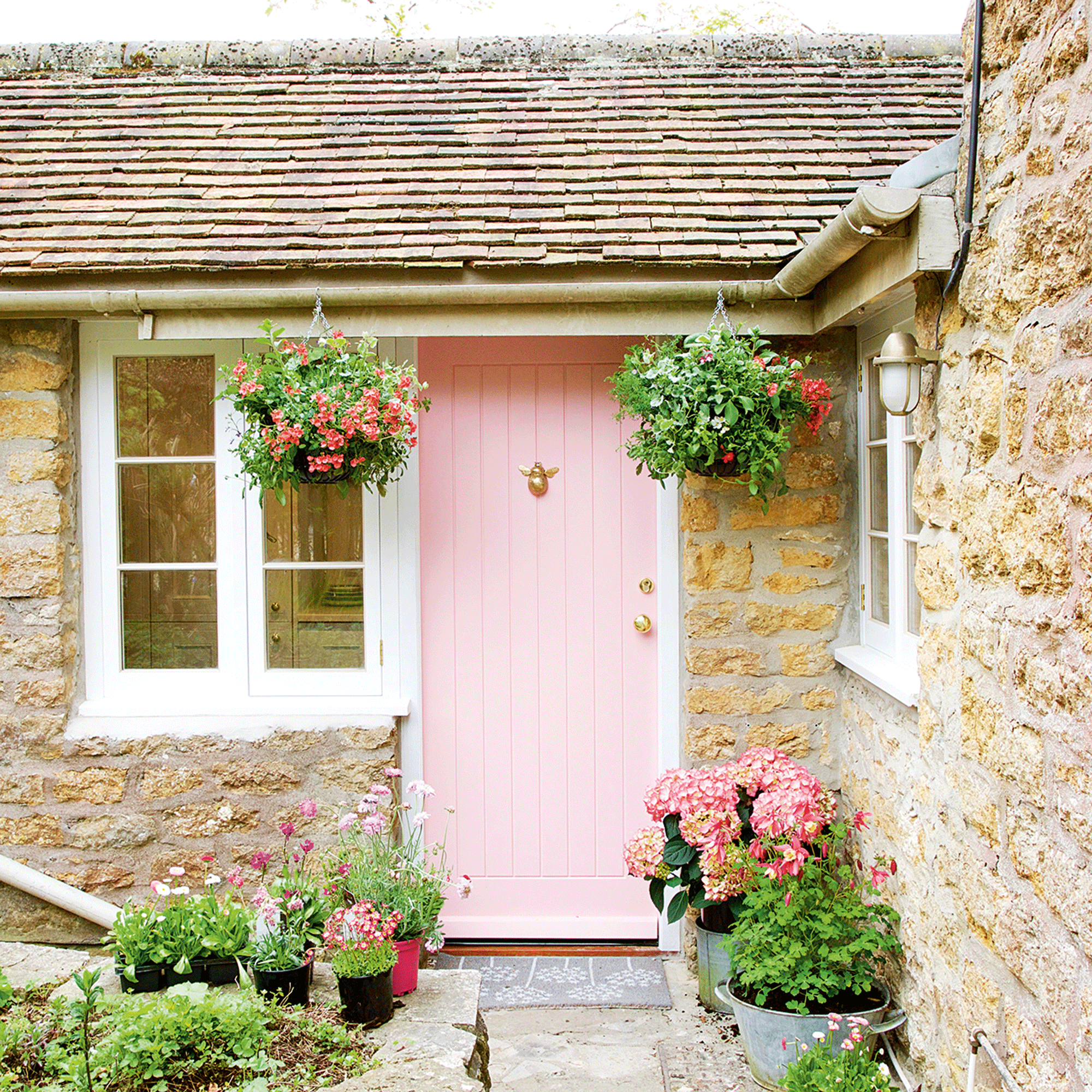
Whether you have a front garden or not, it’s also essential to think about your front door when considering feng shui, with Glynis even arguing that ‘the front door is the most important part of the garden and the house.’
She goes on to explain that ‘outside the front door there should be as big a space as possible, to allow the energy to gather from the road, before entering into the house. It is advisable to place two pots on either side of the door, which will create balance and invite people into the home. Make sure that the pots and plants do not over-power or dwarf the front door. The Door must be visible from the road.’
FAQs
Why is garden feng shui important?
‘Feng shui is integral for promoting the flow of positive energy throughout your garden,’ according to Tom. ‘Gardens are considered a place to relax and unwind so it’s important that they’re filled with elements that improve the feel and flow of the space. In addition, this can also help to encourage wildlife in your garden and improve the growth of plants.’
We have a feeling you’d much rather spend your time out in a garden that is free of clutter and debris, which also has a number of features to engage your senses.
Which side should a garden face?
Thankfully, as there’s not much you can do if your garden or outdoor space can only face one particular way, there is no one ideal spot for a garden, according to feng shui. This is because the Bagua map can be placed whichever way works best for you and your garden, plus you can always move everything from plant and flower pots and containers to water features in accordance with feng shui principles, as Marlena suggests.
‘In line with the Bagua map - water features should be placed within the north, east or southeast corners of the garden,’ she admits. So, there are a few different options. ‘What is important is to have the balance of colour and the sizes of the shrubs, trees and plants so that the look is harmonious and in balance and to create a garden of beauty,’ Glynis concludes.
Will you be giving your garden a feng shui makeover this weekend?







